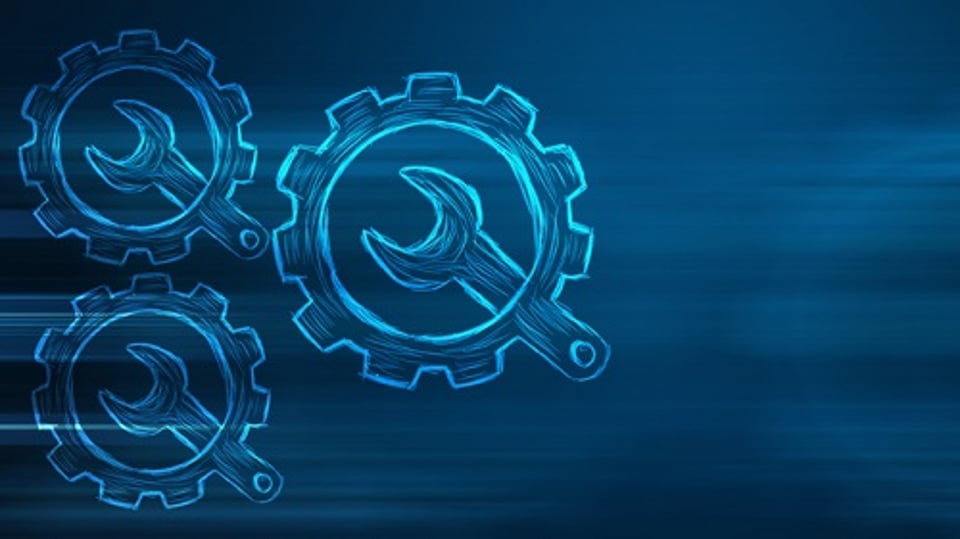Now What? All of That Technology Requires Maintenance
In just a short time, the COVID-19 pandemic resulted in an acceleration of technology across all industries, forever changing the way all sectors conduct business. Companies that once planned their technology strategies over two to three years have been forced to plan and implement tech innovations over the course of weeks or months. Having the luxury to pace tech purchases over the course of a fiscal year, for example, has completely evaporated.
Technology solutions will continue to drive innovation
According to a McKinsey Global Survey , companies accelerated an embrace of technology for customer and supply-chain interactions and for internal operations by three to four years.
Examples of technology embraced by the hospitality industry include:
- IoT sensors mounted on every piece of equipment in a restaurant, giving managers insight into peak periods, equipment usage (inventory), and energy consumption
- On-demand delivery technology and integrated point of sale (POS) systems that help restaurant enterprises enhance the customer experience by identifying customer preferences, tracking information for loyalty programs, and driving return visits and sales
- Tablet solutions that connect the waitstaff to the kitchen
- Tabletop payment and entertainment solutions
- Smart building enhancements that track everything from front of the house order management to back of the house kitchen staff, ensuring that a team is fully staffed and everything runs smoothly
- People traffic counters, time clock systems, security CCTV and video systems, VOIP/telephony and hardware/cabling of new restaurants and retrofits
- Technology allowing for service beyond the “four walls” of a restaurant, supporting to go/curbside ordering and service and self-service kiosks.
Technology fixes require 24/7 maintenance
While initial technology solutions were driven by problems caused by COVID-19 protocols and responses, these temporary fixes now are viewed as long-lasting and permanent. Restaurants of the future will require cutting-edge technology solutions that enable automation in both the front-end of the house and back-end kitchen spaces.
With this permanent tech evolution comes the need for installation and maintenance funds. Indeed, executives claim funding for digital initiatives has increased more than cost increases for personnel and customer outreach.
Technology management programs offer support
The future of business is increasingly smart, connected and autonomous. In such a world, a comprehensive technology management program is more important than ever to ensure that companies are able to maintain their technology investments and maximize uptimes.
With major investments in technology, today’s companies increasingly realize how important it is to have a support program to ensure that their technology is always up and running. Added to the need for this support is the need for a consistent budget for maintenance programs.
Necessary components of a tech management program
A technology management program should include a 24/7 proactive, system-health monitoring capability that ensures technology is always up-and-running, avoiding costly operational disruptions. The program should include an around-the-clock tech support call center, providing remote access to a representative who can provide answers on device use or troubleshoot equipment remotely.
Maximized technology uptime allows users to avoid fluctuating costs while also reducing technology management costs, enabling in-house resources to focus on core responsibilities.
A technology management program can also offer turnkey, supplemental administrative support for any user interface or software program, giving customers access to trained and knowledgeable resources when needed. The program also assures customers receive access to professional program management, a train-the-trainer program and dedicated support for remote device service calls for initial device diagnosis.
When onsite support is needed, a technology maintenance program includes field service technicians who are able to provide hands-on hardware support for troubleshooting, repairs, installs, removals or upgrades. These trained technicians are available to meet assets wherever they are, whatever the service.
COVID-19 has forced the hospitality sector to consider, and ultimately embrace, technology solutions to real-world problems, As every CEO, CFO, and CTO is aware, these technology solutions come with the very real need to be maintained and updated. And at a very real cost. Companies now need to identify technology management programs that meet their needs and fit their financial realities.
About the Author
Zac Graham, AVP Business Development at Velociti Inc, a global provider of enterprise technology solutions. For more than 25 years, Velociti has offered design, deployment, and maintenance solutions that optimize technology investments, improving business performance and customer experience.






